Talk to any digital marketer about their email marketing goals and they’ll tell you the same: grow their list and convert subscribers into loyal customers.
However, most of the advice out there discusses the importance of building an email list and creating brand advocates, not actually converting them into customers.
The truth is that this goal is partly the problem. As a digital marketer, you’re in control of the steps you take to influence your customers, but how your leads act is out of your hands. Your sphere of influence is long and could include hiring internal employees, advertising on social media and the Google Display Network, or putting money into your research and development department.
While these are all effective tactics, email marketing still remains the most influential digital marketing strategy for both B2C and B2B companies. In fact, 73% of marketers attributed email marketing to increasing their conversion efforts, and it’s projected that over 319.6 billion emails will be sent daily worldwide by 2021.
Email marketing has also proved to be the most reliable tactic to influence leads at every stage of the buyer’s journey.
However, if you don’t create a strategic plan on how to move leads into the next step with email marketing (or any tactic, for that matter), the remaining parts of your buyer’s journey might not happen at all.
This is where an email marketing funnel comes into play.
If this sounds confusing, don’t worry. We’ll help you understand how to develop a successful email funnel. Read on to discover exactly what an email funnel for conversions is and how you can implement one into your marketing strategy.
What is an email marketing funnel for conversions?
Before you develop an email marketing funnel, you need to know what it is and why it’s effective. An email funnel is a representation of how a subscriber goes from prospective lead to a customer through educational and promotional email communications. For effective email funnels, marketers have to anticipate the subscriber’s needs to send an email at the right time to elicit action. Email funnels demonstrate the four-stage customer lifecycle:
- Engagement
- Discovery
- Purchase
- Retention
While an email funnel might appear different depending on your company and audience, a modern depiction looks something like this:
Source: Campaign Monitor
While many businesses may not place a lead in every stage, it’s important to understand the actions your subscriber can take with your brand. However, the end goal is to keep them moving and converting down your funnel to eventually become loyal customers.
Why do you need an email marketing funnel?
Subscribers are no longer fooled by traditional marketing tactics and are turned off by salesy advertising strategies. An email marketing funnel is different because it allows marketers to deliver communications at the right moments, so that each email is personalized to each subscriber. Personalization alone can boost your open rates by up to 26%.
Email marketing funnels treat your lead as an individual—not a faceless name in your list—so you’re able to pinpoint where they are in the buyer’s journey and communicate effectively. While there are many benefits to developing an email marketing funnel, consider the following points:
- Did you know it’s 10 times harder to get a new customer than sell to a current one? With an email marketing funnel, you’ll be able to consistently generate new leads while maintaining your existing email list.
- With the right technology, your email funnel will continue to sell for you on auto-pilot, like a skilled salesman working around the clock (with less invasion and hard sales pitches).
- When you consistently offer customers a positive brand experience, they’ll turn into your very own super-fans to advocate for your products. An email funnel gets them there.
4 simple steps to create an email marketing funnel for conversions
While there are countless ways to pull your subscribers through an email marketing funnel, you need to start with the four basic steps to engage and retain your leads.
1. Top of the funnel: generate leads.
You may catch many marketers say, “The money’s in the list!” And, although it’s not the only stage in the email funnel, it’s the beginning of a strong marketing strategy. Why? Unlike your social media followers, you own your email list and have more control over your communication with them.
There are two effective ways you can collect email addresses: opt-in forms and dedicated landing pages. Email opt-ins are embedded throughout your website or blogs and often just ask for the user’s name and email address. Opt-in forms are great for newsletters to keep your subscribers engaged.
Dedicated landing pages are focused on one lead magnet—like an email course or free trial—that educates the user enough to enter your sales cycle. Landing pages are effective because you’re providing the user value, which is a preview to what they can expect from your email communications.
Source: Sprout Social
2. Middle of the funnel: lead nurture subscribers.
Once you’ve found a lead generation tactic that attracts subscribers, you need to keep engaging with them. You can create segmented lists to deliver the most relevant value proposition, product, review, etc. to each subscriber. While this sounds complicated, the right automation platform can automatically segment your subscribers based on the lead magnet or form they signed up for, website or email behavior, or demographic information.
Lead nurturing emails need to be targeted, valuable, and customized communications that position you as a credible brand. Each email is a new opportunity to build a relationship and help you further personalize your emails based on their activity.
A few nurturing emails for this stage include:
- Custom communications based on their preferences
- Case studies, custom success stories, and user-generated content
- More free resources like webinars or blogs
Source: Really Good Emails
3. Bottom of the funnel: convert leads into customers.
If your subscribers have made it past the first two steps, you’ve primed your leads for the big conversion. You’ve built a relationship by providing value, which has elicited an emotional response from your subscriber. At the bottom of the funnel in step three, you want to continue sending personalized nurturing campaigns with a more aggressive conversion strategy.
Final conversion emails include:
- Retargeting: with your warmest leads, like ecommerce abandoned carts, you can implement retargeting strategies that deliver ads based on the actual products they’re interested in.
- Time-sensitive offers: by providing your warm leads with deadlines in urgent emails, you’re giving them a reason to convert. These emails could include coupons, birthday offers, or even messages to subscribers who visit your website for an extended time.
- Onboarding: if you used a lead magnet trial period, you can convert those users into full-paying customers once the free trial is about to end.
Source: Really Good Emails
4. Repeat funnel: retain customers.
Even after a subscriber converts into a customer, your job isn’t done yet. Retaining customers and building long-term loyalty is critical in extending their lifetime value to increase your marketing ROI. Loyalty promotes repeat purchases and referrals, which means you need to work towards their next purchase once they convert. While this is the same technique as nurturing leads in step two, the messaging is slightly different because you can talk about your brand more directly.
How can you achieve this? Consider the following:
- Keep your customers engaged with your products or services, whether it’s through a weekly progress report or technology update, to stay at the forefront of your customer’s minds.
- Match upsell and cross-sell products based on your customer’s purchase history to promote bigger offers. The trick here is to not come off pushy and, instead, provide a better solution.
- Offer referral loyalty campaigns that encourage sharing and word-of-mouth advertising from your customers. The offers can include earning points towards a free item or money off their next order.
Source: Really Good Emails
Wrap up
With an email funnel marketing developed for conversions, you can turn your prospect leads into repeat customers like a well-oiled machine. The automation software allows you to not only build an email list, but also provides your leads with value, all with the click of a button. An email funnel helps boost your ROI, while also helping cut down time-consuming tasks.
While there are many fluid actions involved with converting a customer, consider the following steps to help you get started:
- Grow your email list: Utilize opt-in forms and dedicated landing pages to attract prospective leads with the promise of delightful content.
- Nurture your subscribers with valuable content: Send emails that include offers, webinars, and case studies that position your company as a solution to the subscriber’s problems.
- Convert your subscribers into paying customers: Use time-sensitive messaging or retargeting methods that push your subscribers into converting.
- Retain your customers with repeat purchases: Continue to nurture your leads post-purchase to build a community of brand advocates loyal to your brand.
Ready to start building email marketing funnels that convert? Campaign Monitor is a comprehensive email marketing platform for all your automation needs. Sign up for free today!










